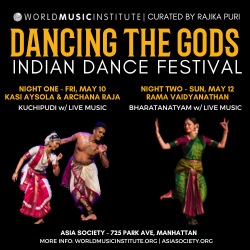Testimony to New York State Senate Finance Committee and New York State Assembly Ways and Means Committee Joint Legislative Hearing on the Fiscal Year (FY) 2024-25 Executive Budget Proposal: Economic Development/Arts
Tuesday, January 30, 2024
Testimony to New York State Senate Finance Committee and New York State Assembly Ways and Means Committee Joint Legislative Hearing on the Fiscal Year (FY) 2024-25 Executive Budget Proposal: Economic Development/Arts
• Support Senate Bill S5714A and Assembly bill A4912A aimed at increasing access to resources for culturally diverse arts and culture organizations that advocate for diversity, equity and inclusion, racial and social justice, and cultural preservation.
• Support Senate Bill S285 and Assembly Bill A1502 which would add arts and music education into the public-school curriculum outlined in NYS education law. Given the lack of compliance with current arts education teaching requirements, this sets a baseline for greater equity and opportunity across the state. It also ensures that more students have exposure to arts education as a means of bolstering the pipeline for arts workforce in addition to building important life skills needed across career paths.
• The establishment of an Arts Education Associate position within the New York State Department of Education (NYSED);
Contributions of the Arts and Culture industry are at the core of New York State’s economic development and essential to its overall economic health. In addition to being the number one driver of tourism to the state, the arts and cultural sector generates $143.8B value added to the state’s economy and accounts for 7% of value added to the New York State economy¹ and nearly 13% of New York City’s total economic output². In 2019, New York City’s arts, entertainment, and recreation sector employed 93,500 people in 6,250 establishments amounting to $7.4 billion in wages³. Arts and culture is also a major national export industry, with $1.6 billion generated by the expenditures of cultural tourists and the proceeds of touring companies⁴. Adjacent industries that benefit the most from the dynamic economic activities generated by the arts and culture sector include real estate, business, and professional services, wholesale and retail trade, eating and drinking establishments, hotels and personal services, utilities, transportation, medical and educational services, finance and insurance⁵. Independent artists, writers and performers, performing arts companies, and promoters of performing arts are among the top five core industries within the arts and cultural sector.
Dance organizations and workers in NYC are navigating the effects of the pandemic with fragility.
Based on Dance/NYC’s most recent 2023 report⁶, 40% of dance organizations are classifying their financial health as weak or very weak, an increased number of organizations are relying on contributed income and more than half of organizations not having access to reserves. On average, dance workers earn about 15% below NYC's living wage, while dancers and choreographers earn about $23K. We need strong support at the state level to ensure our workers and organizations can survive this economic climate.
Dance/NYC’s COVID-19 Covid Brief⁷ also reveals the disproportionate impact that the pandemic has had on small-budget groups and individual dance makers, which make up the majority of the dance-making sector but have historically lacked access to resources and support. Additionally, these impacts are felt most acutely by arts workers who identify as BIPOC, immigrants, and disabled among communities with less access to capital reserves. As of October 2023, total employment in the arts, entertainment, and recreation sector remains 13.1% below pre-pandemic levels⁸.
The New York State Council on the Arts (NYSCA) is the only State agency dedicated to supporting arts and culture. An investment of $100 million in NYSCA would bolster the agency’s capacity to provide grants to organizations for operations and capital investments and put individual arts workers back to work through employment programs. NYSCA has long served as a lifeline for arts and cultural organizations to sustain their work and deepen their engagement with communities, and a substantial increase in baseline funding for NYSCA can allow its provisions to adequately address the immediate needs of the sector and sustain its long-term growth. The need in the arts and cultural sector far outweighs the resources currently available in NYSCA — in fiscal year 2022, NYSCA was allocated $20 million for capital funding grants, though it received $68 million in capital funding requests.
The growth and resilience of the cultural sector has long been impeded by historic underinvestment and underrepresentation in policymaking by the state and city governments and agencies of BIPOC, disabled people, and immigrant arts workers and community-based cultural organizations who face persistent systemic barriers that have long perpetuated patterns of inequity in the field. This includes lack of access to funding at the governmental and philanthropic levels.
Supporting legislation including Senate Bill S5714A and Assembly bill A4912A aimed at increasing access to resources for culturally diverse arts and culture organizations that advocate for diversity, equity and inclusion, racial and social justice, and cultural preservation, is key to creating a just and inclusive ecosystem for all artists. Furthermore, by supporting Senate Bill S285 and Assembly Bill A1502, arts and music education would be incorporated into the public school curriculum as per NYS education law, paving the way for greater equity and opportunity across the state, and ensuring more students have access to arts education as a means of building life skills that are needed throughout their career paths as well as bolstering the pipeline for arts workforce. These bills would help ensure that arts and dance organizations have the resources and support they need to thrive and that our young people can reap the benefits from exposure to the arts.
Arts and culture are an integral part of a neighborhood cultural ecosystem that promote social well-being in the community⁹. Studies have shown that the presence of cultural resources is significantly associated with improved outcomes in mental health, education, youth involvement in the criminal justice system, community safety, and other dimensions of well-being of a community.
In order to advance the representation and prioritization of arts education in the State, New York State Education Department (NYSED) allocations outlined in the Governor’s current budget should be supplemented to ensure the establishment of an Arts Education Associate position at NYSED and the further development of arts education programming in the State school system. Arts education fosters generational learning and engagement that further drive and sustain the economic contributions of the arts and cultural sector.
Arts and culture can lead New York’s economic recovery and these investments can help ensure their resilience, growth, and long-term survival. Equity must be at the center of all budget allocations and funding programs across State agencies. Communities of color, disabled people, and immigrants continue to endure disproportionate economic and social impacts of the pandemic. Individual arts workers and small-budget cultural organizations serving these historically underinvested communities should be prioritized throughout the State’s programs to support pandemic recovery and overall economic development.
For Dance/NYC and its constituents, the most urgent priorities are:
• $100 million in total baseline funding to the New York State Council on the Arts to fund the critical work of thousands of arts and dance organizations; NYSCA has not increased its funding for 15 years. We need this increase if we are going to build a stable cultural economy in NYC and across the state.
• Support Senate Bill S5714A and Assembly bill A4912A aimed at increasing access to resources for culturally diverse arts and culture organizations that advocate for diversity, equity and inclusion, racial and social justice, and cultural preservation.
• Support Senate Bill S285 and Assembly Bill A1502 which would add arts and music education into the public-school curriculum outlined in NYS education law. Given the lack of compliance with current arts education teaching requirements, this sets a baseline for greater equity and opportunity across the state. It also ensures that more students have exposure to arts education as a means of bolstering the pipeline for arts workforce in addition to building important life skills needed across career paths.
• The establishment of an Arts Education Associate position within the New York State Department of Education (NYSED);
Dance/NYC thanks you for your consideration and commends your leadership and ongoing efforts to ensure that New York remains a capital for arts and culture.
¹ Bureau of Economic Analysis. Arts and Cultural Production Satellite Account, New York (2021). https://apps.bea.gov/data/special-topics/arts-and-culture/summary-sheets/Arts%20-%20New%20York.pdf
² Office of the New York City Comptroller (2019). The Creative Economy: Art, Culture and Creativity in New York City. https://comptroller.nyc.gov/reports/the-creative-economy/
³ Office of the New York State Comptroller (2021). Arts, Entertainment and Recreation in New York City Recent Trends and Impact of COVID-19. https://www.osc.state.ny.us/reports/osdc/arts-entertainment-and-recreation-new-york-city-recent-trends-and-impact-covid-19
⁴ Americans for the Arts. The Arts As an Industry: Their Economic Importance to the New York-New Jersey Metropolitan Region. https://www.americansforthearts.org/by-program/reports-and-data/legislation-policy/naappd/the-arts-as-an-industry-their-economic-importance-to-the-new-york-new-jersey-metropolitan-region-0
⁵ Ibid.
⁶ State of NYC Dance 2023: Findings from the Dance Industry Census: https://hub.dance.nyc/wp-content/uploads/2023/12/State-of-NYC-Dance-2023-Report-FINAL-23_12_11_ACC.pdf
⁷ Coronavirus Dance Impact Information Brief 2021 https://www.dance.nyc/programs/research/2021/03/Coronavirus-Dance-Impact-Information-Brief-A-Dance-Sector-in-Peril-/
⁸ Office of the New York City Comptroller. New York by the Numbers: Monthly Economic and Fiscal Outlook no. 64, January 30, 2024. https://comptroller.nyc.gov/newsroom/newsletter/new-york-by-the-numbers-monthly-economic-and-fiscal-outlook-no-85-january-17th-2024/
⁹ Stern, M. and Seifert, S. (2017). The Social Wellbeing of New York City’s Neighborhoods: The Contribution of Culture and the Arts. https://repository.upenn.edu/siap_culture_nyc/1/
¹⁰ New Victory Theater. Spark Change: Investing in performing arts education for all https://bit.ly/NewVictorySparkChangeReport




